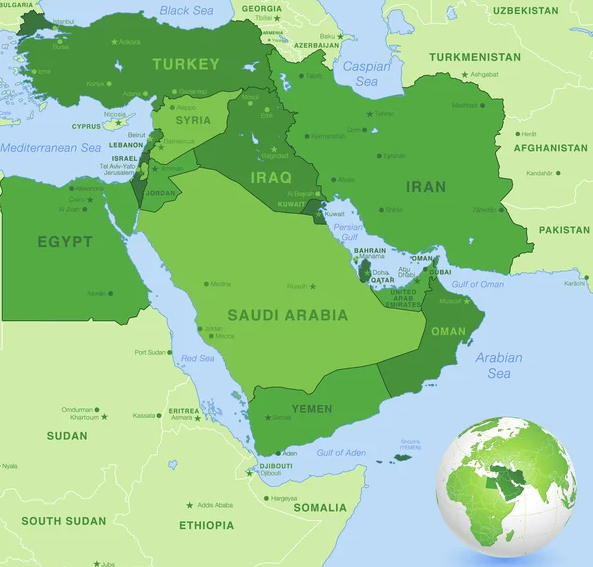World Geostrategic Insights interview with Chris Devonshire-Ellis on the importance of the reactivation of diplomatic relations between Iran and Sudan after a seven-year break.

Chris Devonshire-Ellis is Chairman of Dezan Shira & Associates, a multidisciplinary professional services firm that advises investors and governments on foreign investment developments in the Eurasian region, with 40 offices and about 2,000 employees in China, India, ASEAN and the Middle East. He is also the Publisher of Asia Briefing, a media platform that produces daily web content, and regular magazines and books concerning foreign investment into Asia.
Q1 – On Oct. 10, in a joint statement, Sudan and Iran announced the restoration of diplomatic relations, which had been soured by Sudan’s alliance with Saudi Arabia and then permanently severed in January 2016 when Tehran’s embassy in Riyadh was sacked. Prior to the closure of diplomatic relations, relations between Khartoum and Tehran had been extremely close diplomatically, economically, and militarily for about 30 years. Why did Sudan and Iran re-establish relations? What interests do they share and what does the resumption of their relations mean for the two countries? The current military-led Sudanese government of al Burhan is supported by Saudi Arabia, can we consider Tehran’s attempts to improve relations with Sudan also as part of its efforts to deepen relations with Riyadh?
A1 – Sudan is a pertinent partner for Iran, as it borders Egypt, Ethiopia, Saudi Arabia, and nearby UAE, all like Iran about to take up BRICS membership from January 2024.
Sudan has a population of 49 million and a GDP (PPP) of US$207 billion. Per capita GDP (PPP) is US$4,450. This compares with Iran’s population of 89 million, and GDP (PPP) figures of US$1.692 trillion and per capita income of US$19,548. These differences mean that Iran will be able to shift some manufacturing to Sudan to take advantage of lower production costs. The benefit for Sudan is that it helps the country develop its secondary manufacturing and related services sectors.
A Trade Agreement between the two countries had formally been adopted; yet suspended during the diplomatic break. It will be of interest to manufacturing exporters and investors on both sides as to a resumption of this. The two countries also signed a 2004 Double Tax Treaty which is also capable of reducing taxes in bilateral services income.
Iran is also a key hub for the INSTC transport network, the potential to expand this into North Africa via Sudanese Red Sea Ports is a further step towards connecting China, Central Asia and Russia to the MENA region.
Q2 – In an article published in Silk Road Briefing you wrote that the reestablishment of diplomatic relations between Sudan and Iran has important regional and global implications because it gives control of the Red Sea to the BRICS. Can you provide more details on this issue here as well?
A2 – At the most recent BRICS summit it was decided amongst the original BRICS members – Brazil, Russia, India, China and South Africa – to expand the group by another six countries from January 1 next year. These include Argentina, Egypt, Ethiopia, Iran, Saudi Arabia and the UAE. While Argentina’s acceptance of this offer may not be realized due to changing political winds in the country and an election poised to take place this month, the remaining five new BRICS members are all MENA influential – and that includes the Red Sea.
The Red Sea includes Egypt, Sudan, and Eritrea on the Western shores, with Ethiopia also a significant, albeit non-coastal presence. To the Eastern shores lies Saudi Arabia, and to the north, on the Persian Gulf, the UAE.
Sudan’s reestablishing of diplomatic relations with Iran is therefore of considerable importance when considering the overall development of the BRICS influence within the MENA and Red Sea regions. The move essentially passes control of the entire Red Sea and Suez Canal shipping to the BRICS and BRICS-friendly nations.

Q3 – Can the resumption of relations with Sudan also be seen as a concrete sign of Tehran’s new campaign of penetration into the African continent, manifested last July with the trip to Kenya, Uganda and Zimbabwe by Ebrahim Raisi, the first Iranian president to tour Africa in 11 years? And also as a sign of the growing influence of Islamist groups? What are Iran’s ambitions in Africa?
A3 – With the INSTC network, Iran is repositioning itself as a Middle Eastern transportation hub that connects China and Central Asia to the Middle East, East Africa and South Asia. All these regions have significant Muslim populations. It is in Iran’s interests to exploit the INSTC and further develop it into MENA and East Africa. As the primary INSTC transit country, it can both receive increasing volumes of transit payments should the network expand while at the same time providing Iranian manufacturers with new markets.
Q4 – The Iran Sudan agreement comes at a most sensitive time for the Middle East, in the midst of the very serious crisis caused by attacks on Israel by Hamas, which has always been supported by the Iranian government. Sudan in the past has always been hostile to Israel. However, in January 2021, Sudan signed the Abrahamic Accords, formally recognizing the state of Israel, while the historic visit of the Israeli foreign minister to Khartoum on Feb. 2, 2023, sanctioned the normalization of relations between the two countries. The rapprochement with Iran, could it change the current cordial relationship between Sudan and Israel?
A4 – Unfortunately, the situation with Israel has become violent and unstable in an unexpectedly short time. It is far too early to project what will happen to Sudanese relations with Israel, however a scaling down of bilateral ties would be preferable to a suspension. The paradox is that Israel needs the Abraham Accords to commercially survive, it needs the Middle East. How to accomplish that at this moment remains ambiguous.
I suspect however that China will be playing a quiet behind the scenes role, it does not wish to see conflict in a region it needs to be at peace in order to develop its Belt & Road Initiative. This is because China has a real need for Middle Eastern and African sourced supplies. Interestingly, China is the largest single Asian trade partner for both Sudan and Israel and the second biggest for both after the UAE (Sudan) and the United States (Israel). Beijing will want to see rapprochement and not conflict, while the interested parties in the region are all moving towards Asia as opposed to enhancing relations with what are perceived as declining or conflictive Western influences.
Chris Devonshire-Ellis – Chairman, Dezan Shira & Associates.
Image Credit: Iranian foreign ministry (Iranian Minister of Foreign Affairs Hossein Amir-Abdollahian meets with his Sudani counterpart Ali Sadeq in Baku, Azerbaijan on July 6, 2023)







